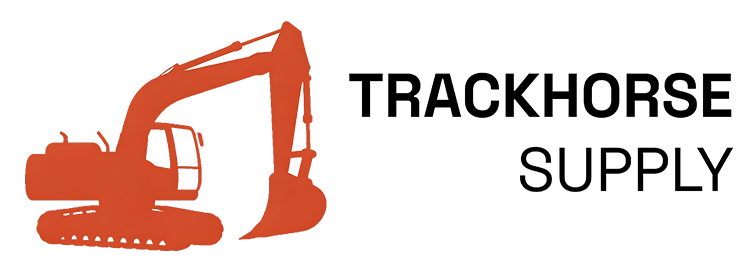How to Choose the Right Rubber Tracks for Your Tracked Dumper: What Matters and Why
Tracked dumpers, also called crawler carriers, are essential for off-road hauling across a wide range of industries—from construction and mining to forestry, disaster recovery, and environmental restoration. Machines like the Morooka MST2200 or Prinoth Panther T14R are specifically designed to travel across soft, muddy, snowy, or steep terrain with heavy loads.
To keep these machines working at peak performance, choosing the right rubber tracks is essential—not just for performance, but for safety, machine longevity, and job site efficiency.
Why Rubber Track Selection Matters
Rubber tracks are more than just wear parts. They’re a structural component that affects everything from traction and fuel consumption to undercarriage wear and machine handling. Unlike skid steers or excavators—where multiple tread patterns or track options exist—tracked dumpers almost universally use a straight-bar tread pattern, designed for maximum forward traction in unstable conditions.
But that doesn’t mean “any track will do.” Selecting the correct size, construction, and quality level is critical for long-term performance.
1. Confirming Exact Track Fitment
Tracked dumpers often require very specific track dimensions that must match the OEM specs exactly. Even slight deviations in pitch, link count, or width can cause problems.
Key specifications to confirm:
Track Width (mm)
Pitch (distance between links)
Number of Links
Guide Type and Lug Design
For example:
A Morooka MST1500 typically uses a track with 700mm width, 100mm pitch, and 98 links.
The Prinoth Panther T14R requires an even larger and more robust track system, due to its payload and chassis design.
Using an incorrect track may lead to increased wear on the undercarriage, poor track alignment, and even damage to the final drive components.
2. Material Quality and Internal Construction
Not all rubber tracks are created equal—especially when it comes to tracked dumpers operating in rugged, high-demand environments.
What to look for:
Continuous Steel Cables: Tracks reinforced with continuous steel cords provide better load distribution and reduce the chance of internal separation.
Heavy-Duty Guide Lugs: On tracked dumpers, lugs handle tremendous lateral stress. Weak or hollow-core lugs wear prematurely and cause tracking issues.
Abrasion-Resistant Rubber Compounds: High-end tracks use engineered rubber blends to resist cuts, tears, and UV degradation.
Lower-cost alternatives may look the same at first—but can suffer from poor bonding, steel cord slippage, or delamination under stress.
3. Undercarriage Condition Matters Too
Even the best rubber tracks won’t last if the undercarriage isn’t in good condition. Before replacing tracks, inspect:
Sprockets: Look for worn or hooked teeth
Bottom Rollers: Should rotate smoothly and have minimal play
Front Idler and Tensioner: Check for smooth operation and no leaking grease
Track Frame: Look for cracks, excessive wear, or debris buildup
A bad sprocket can cut the life of a new rubber track in half. It’s usually best practice to replace sprockets when you install a new set of tracks.
4. Warranty, Supplier Support, and Lead Time
When you need new rubber tracks for your tracked dumper, availability and support are just as important as specs.
TrackHorse Supply offers:
Fast nationwide shipping
Support for Morooka, Prinoth, IHI, Terramac, and other dumper brands
Expert help with identifying the right track size and build
High-quality aftermarket and OEM-replacement options
Final Word: Your Tracks Work as Hard as Your Machine
Tracked dumpers are built to perform in places no wheeled vehicle can go—and the rubber tracks are what make that possible. Investing in the right set of tracks isn’t just about durability. It’s about maximizing uptime, reducing maintenance costs, and keeping your machine safe and stable in the field.
If you're unsure which track fits your model, or need help sourcing parts, our team is here to support you.
→ Browse Rubber Tracks for Tracked Dumpers
→ Contact Us on 908 493 6418 or Click Here for Sizing or Compatibility Help
